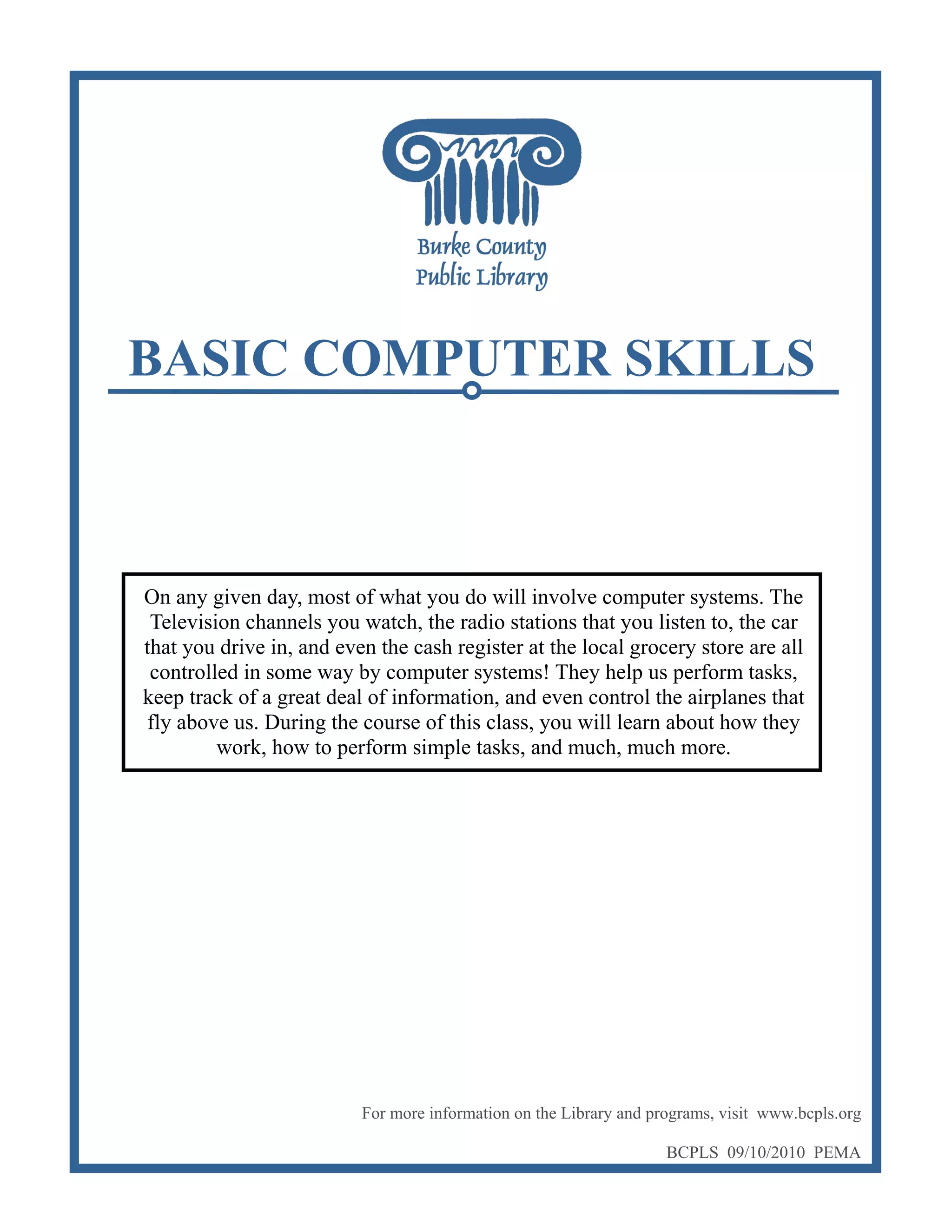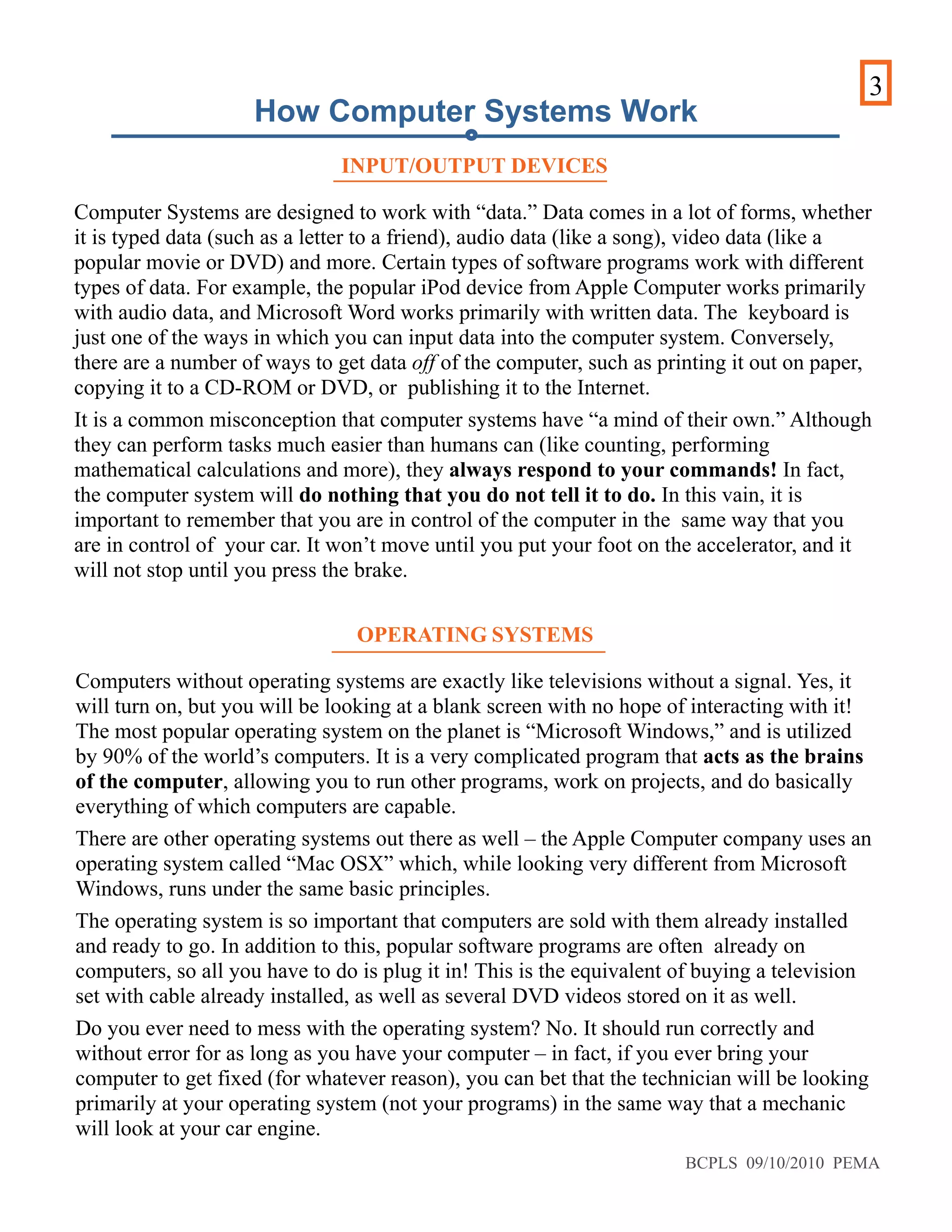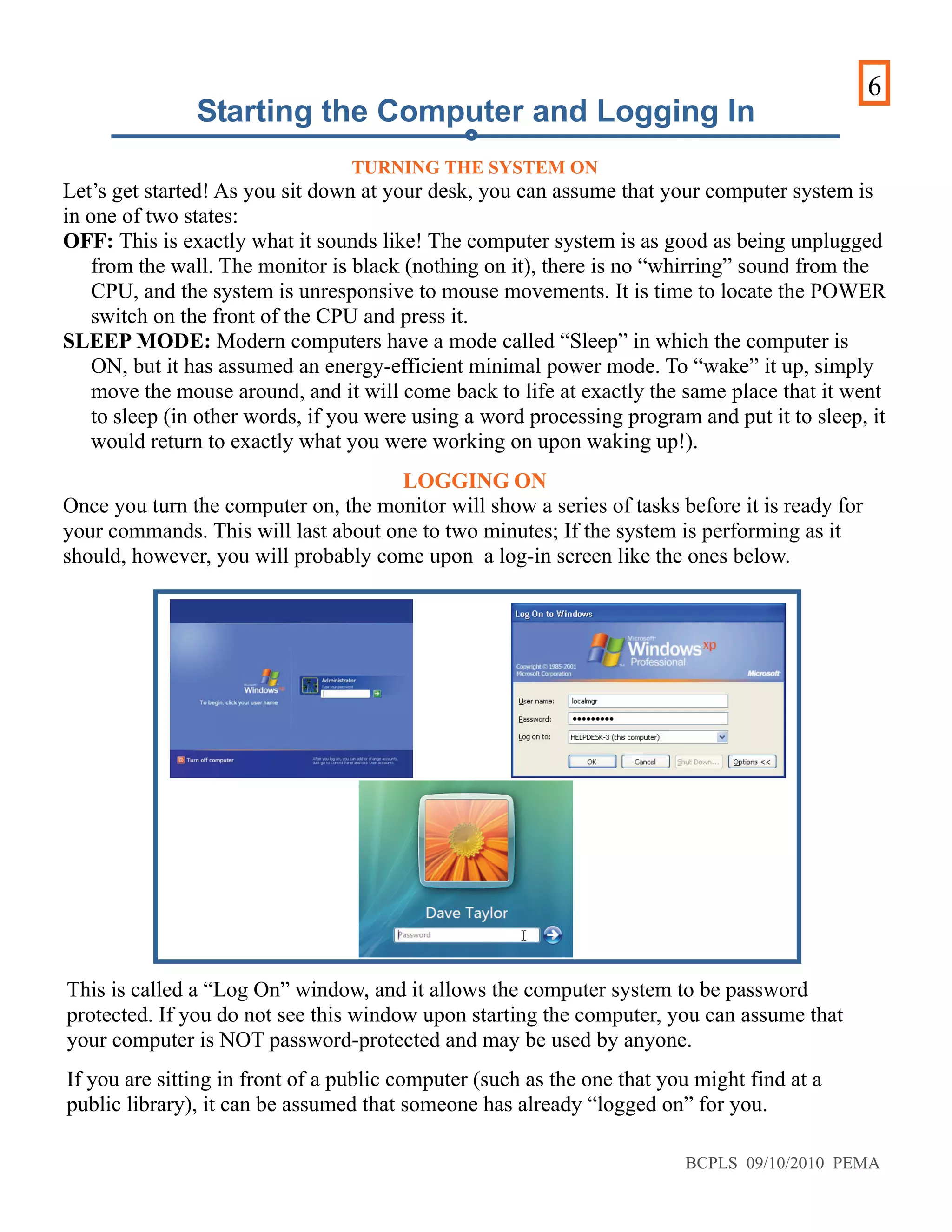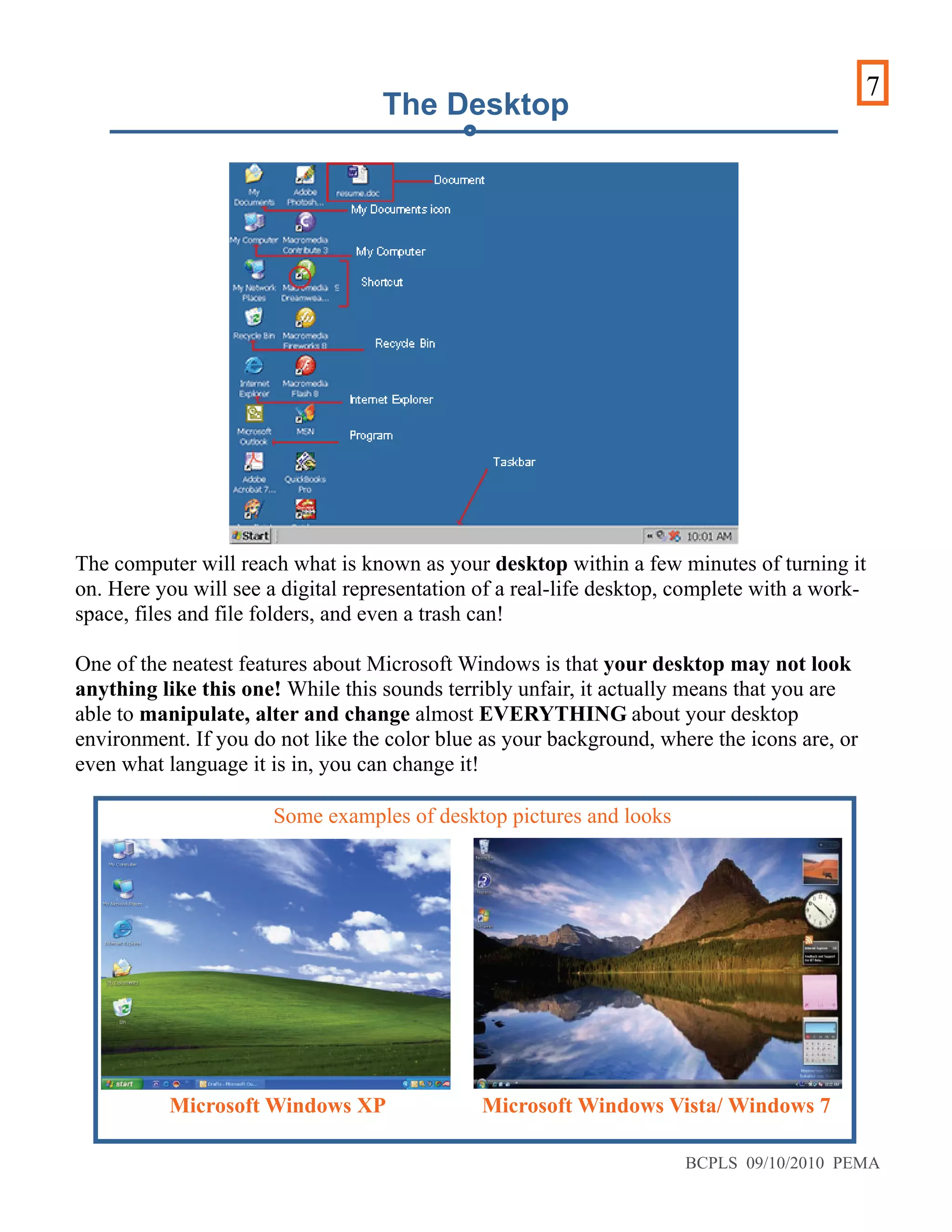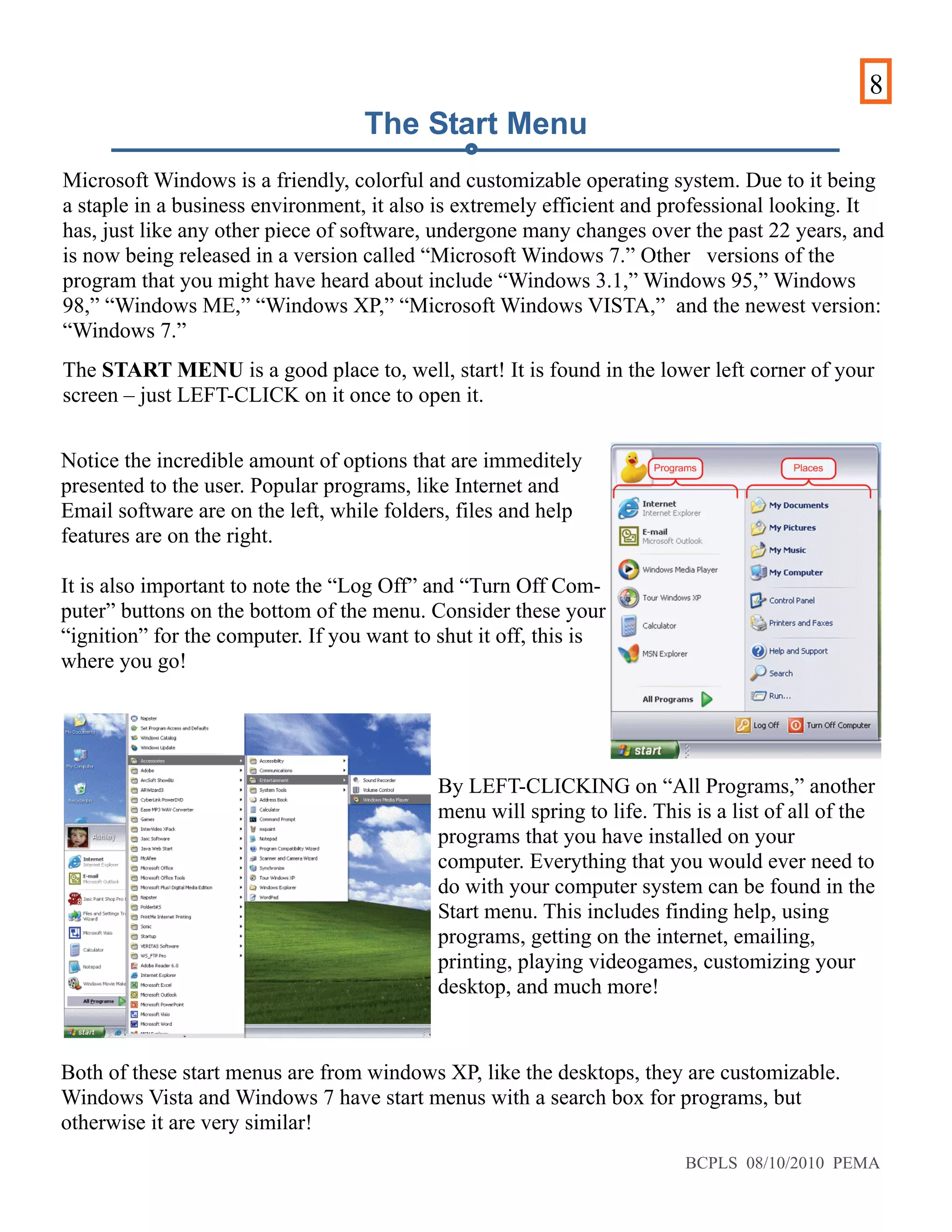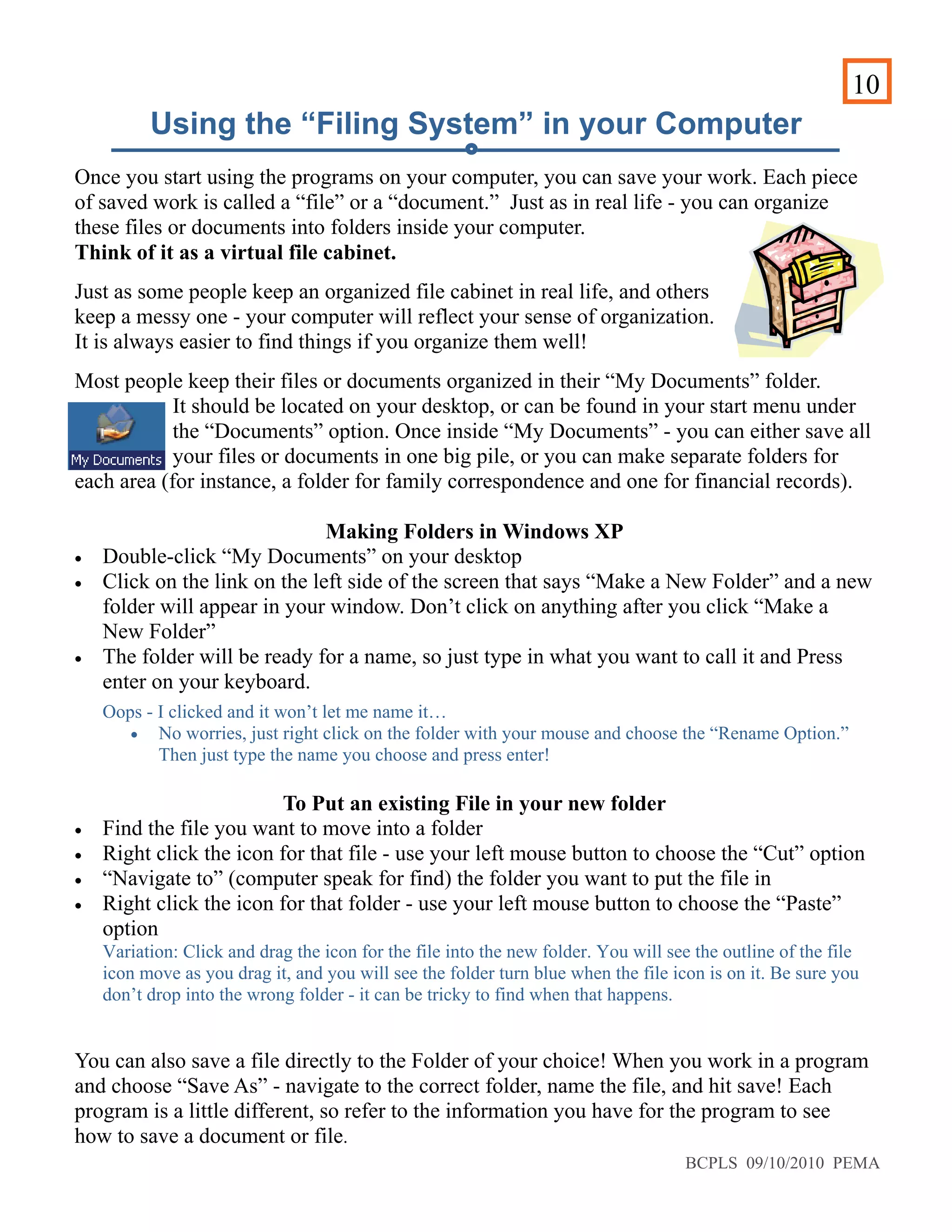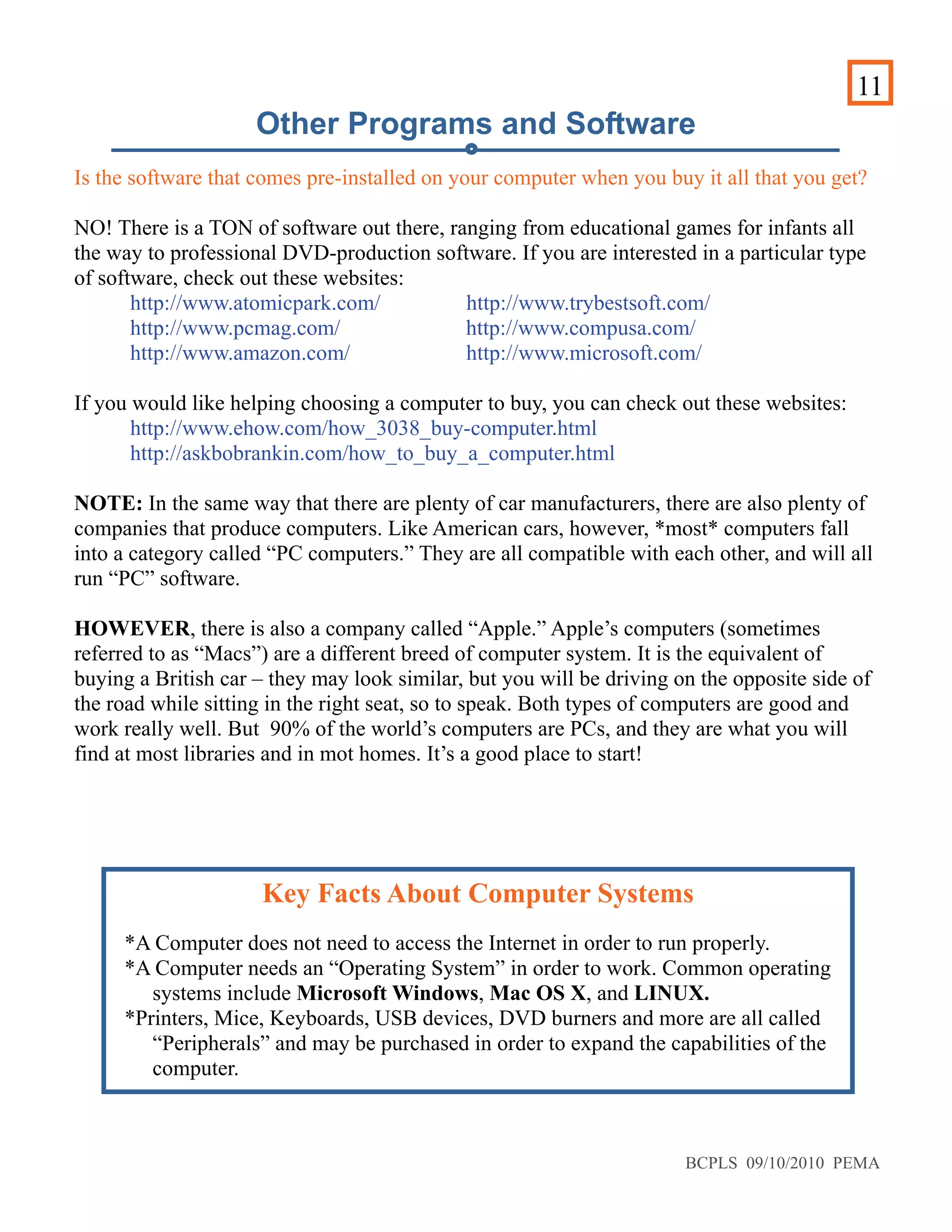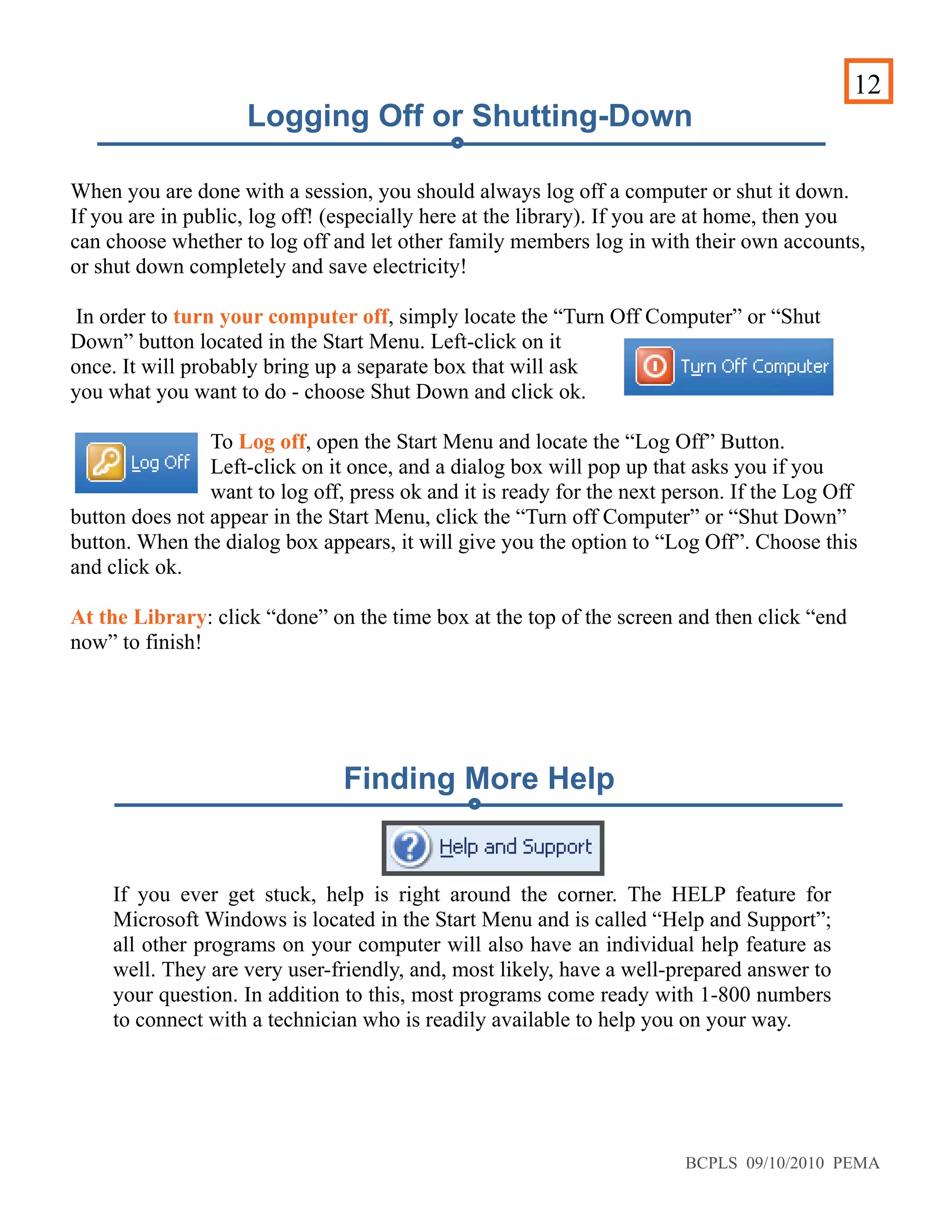The document provides an overview of basic computer skills. It discusses how computers control many everyday devices and tasks. It also outlines what will be covered in the class, including how computers work and how to perform simple tasks. The document then provides descriptions of major computer components like the monitor, tower, keyboard, and mouse. It explains that computers allow users to perform tasks more easily than humans can by following commands.
